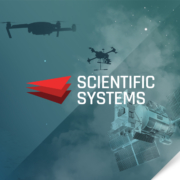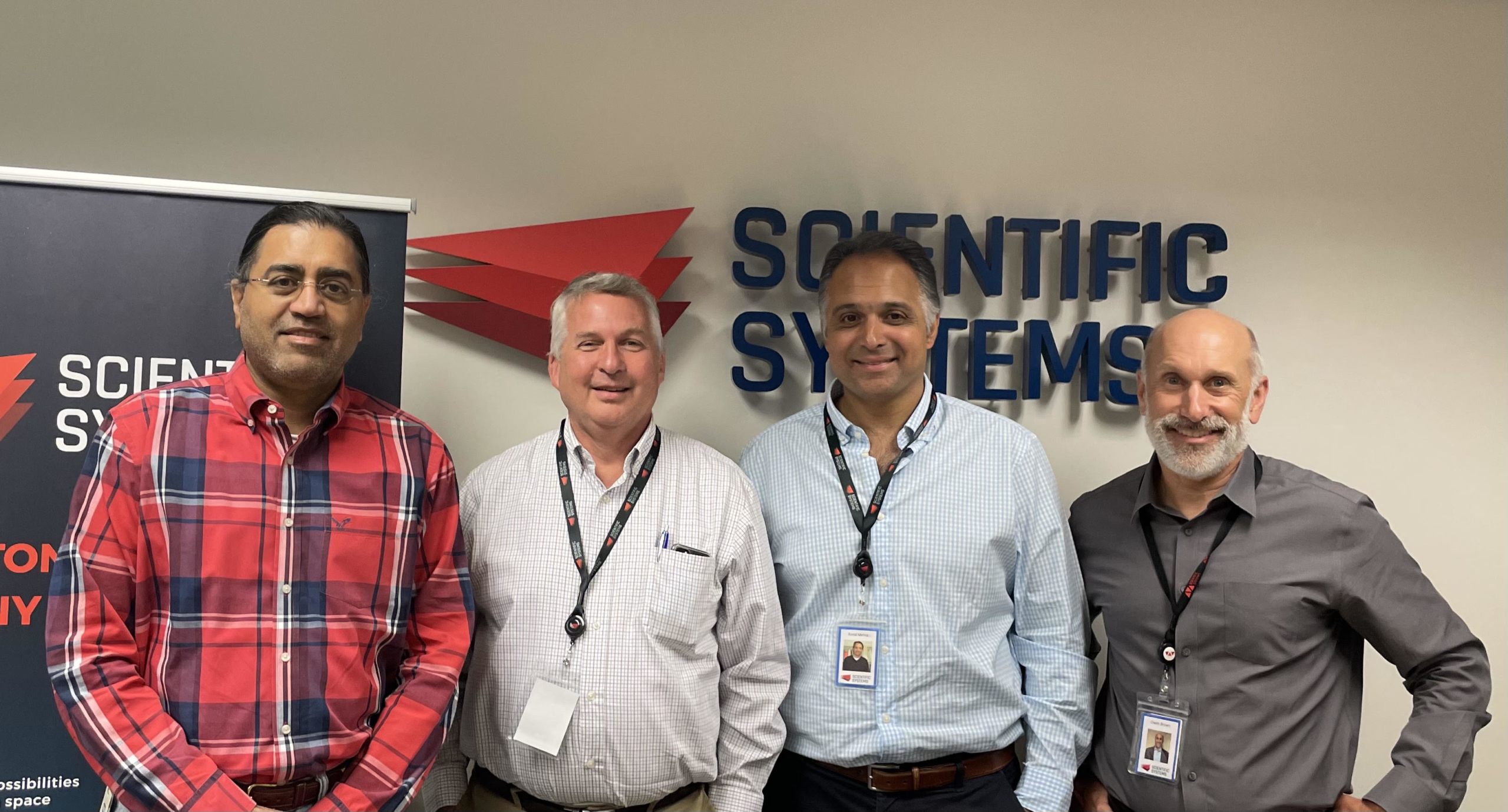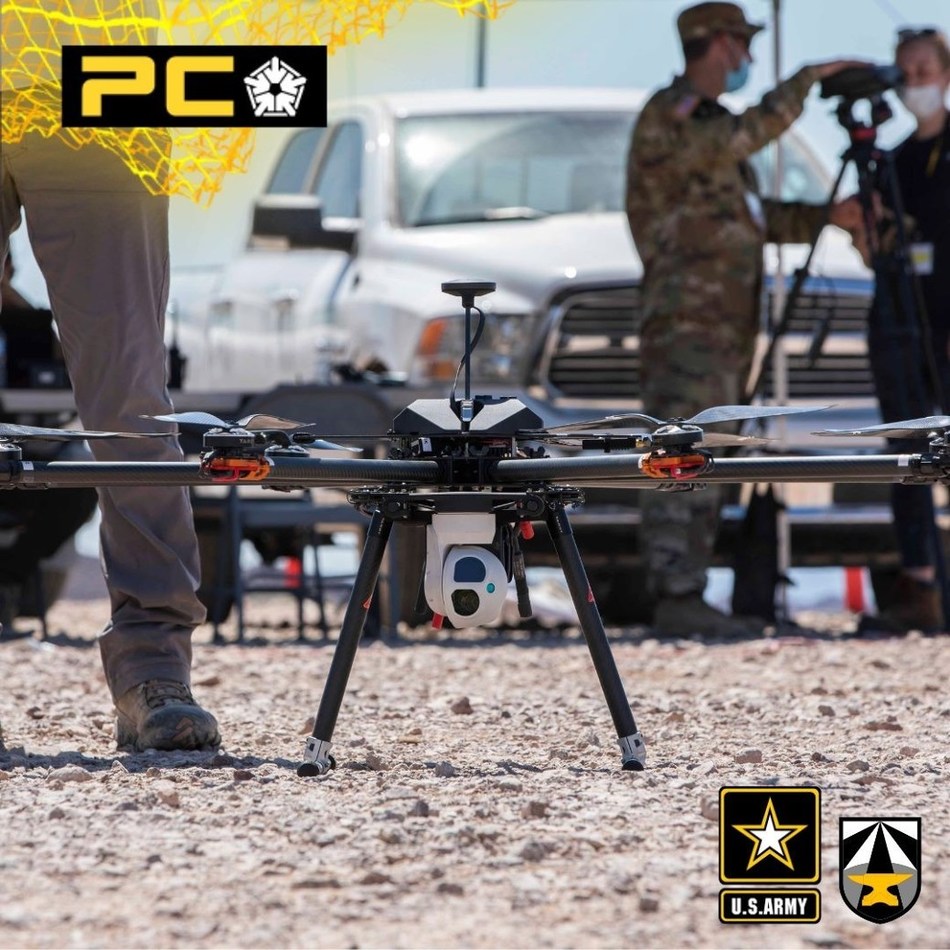WOBURN, Mass., Feb. 8, 2022 /PRNewswire/ — Scientific Systems Company, Inc. (SSCI), an industry leader and pioneer in autonomous systems, has conducted initial demonstrations of its AI-enabled edge processing system as part of the Prototype On-Orbit Experimental Testbed (POET) experiment for the Space Development Agency (SDA). POET is hosted onboard Loft Orbital’s YAM-3, a “satellite-as-a-service” platform which was launched June 30, 2021 on Space-X’s Transporter-2 mission. POET’s space-based edge processing system is powered by SSCI’s Collaborative Mission Autonomy (CMA) software. POET provides an on-orbit SDA data fusion application prototype within the CMA software running on POET’s Innoflight CFC-400, a low size, weight, and power, highly capable, 0.5U size commercial off-the-shelf space processor.
SSCI conducts initial on-orbit demonstrations of AI-enabled edge-based processing for the Space Development Agency
SSCI, under the SBIR Phase II POET contract with SDA, integrated a machine learning based cloud-detection app, from an OUSD(R&E) funded BlackSky Technology, Inc contract with SDA, in just 4 weeks from delivery through execution. The cloud segmentation software automatically detects and segments out clouds from images collected by an electro-optical (EO) imager. This is the first step towards an initial edge-processing demonstration of multi-INT data fusion. Future experiments include uploading progressively more complex executions of 3rd-party software and load testing to inform edge processor sizing for SDA’s architecture. SDA’s architecture is designed to enable maintaining track for left-of-launch, time-critical targets and to enable the creation of weapons quality tracks from the sensor to the warfighter in operationally relevant timelines through increasing levels of automation. The objective is actionable sensor-to-shooter timelines in support of Beyond-Line-of-Sight (BLOS) engagements with long-range weapons, including hypersonic missiles.
The CMA software used in the POET experiment was originally tailored for DARPA’s Blackjack Pit Boss effort, and as such is designed to provide proliferated low-Earth Orbit (P-LEO) constellations with onboard battle management, command, control, and communications (BMC3) capability. CMA is designed so that a user can send a high-level request for tactical information, called a “Mission Service Request,” directly to the spacecraft, and with dramatically compressed timelines, receive the desired information back. For instance, a user onboard a Navy ship could send a Mission Service Request to the spacecraft in the form “tell me the location and classification of every ship in this box I’ve drawn on my computer screen.” That request, once received and decomposed by CMA software, would trigger the edge-processing system to task YAM-3’s LeoStella-built bus to point at that specified region of the ocean, when accessible, and then control the onboard electro-optical imaging payload to collect an image at the appropriate time. Next, CMA would activate a hosted application to process the image using automatic target recognition exploitation algorithms. Finally, CMA would task the YAM-3 satellite communications system to transmit the processed data, consisting of ship locations and their classifications, back to the Navy user.
SSCI’s CMA software has been developed and rigorously field tested over the last decade to enable machine intelligence at the tactical edge in all of the physical domains. Incorporating revolutionary autonomy technologies, the agent-based software enables large numbers of autonomous platforms and smart sensors to orchestrate their context-dependent behaviors to accomplish multiple concurrent, collaborative, and prioritized mission objectives. This is accomplished in a highly distributed, decentralized, and resilient approach, without the need for humans in-the-loop, or a centralized C2 node that could introduce single-points-of-failure, high latencies, and bottlenecking. By automating the planning, management, and processing functions and moving them to the satellite edge, the responsiveness and resiliency of P-LEO systems is greatly enhanced, providing the requisite performance required to execute a variety of custody, tracking, and data transport “kill-chain” mission-focused services.
Dr. Owen Brown, Vice President of Solutions Development at SSCI states, “From P-LEO BMC3, to beyond-line-of-sight target processing, and highly responsive Tactical-ISR, the POET platform now circling the Earth can be used to demonstrate a variety of new capabilities for the National Defense Space Architecture. With an expected five-year lifetime on this satellite and the ability to upload new mission software at any time, we have a precious resource available for critical space and multidomain tests of innovative technologies and demonstrations of disruptive CONOPS”. Dr. Raman Mehra, President and CEO of SSCI continues, “The launch and initial operation of our on-orbit testbed represents a giant leap – a Moonshot – for our company. We are proud to be contributing to SDA’s mission and, as a small business, we are excited to bring them innovative technologies for the immediate needs of their new architecture. We also thank our teammates who have been critical to the success of this effort to date Loft Orbital, Orbit Logic, Emergent Space Technologies, Innoflight, Leaf Labs, Oxford Systems, Kitware, and Raytheon BBN.”
About Scientific Systems Company, Inc.
Founded in 1990 and based in Woburn, MA, Scientific Systems Company Inc. (SSCI) invents disruptive technologies, develops revolutionary solutions, and builds trusted products for our customers’ most challenging missions. SSCI focuses on the creation of AI/ML enabled capabilities to command, control, communicate with, and manage composable collections of intelligent agents, smart sensors, and autonomous platforms across all domains.










